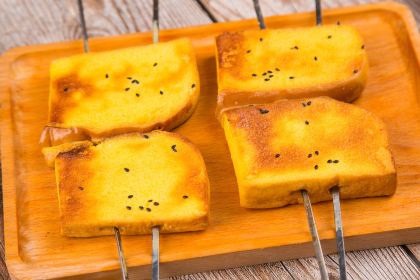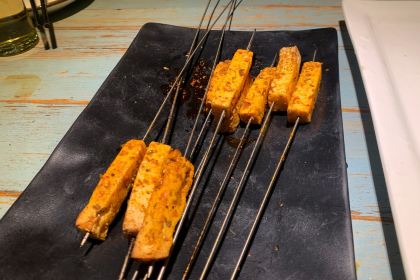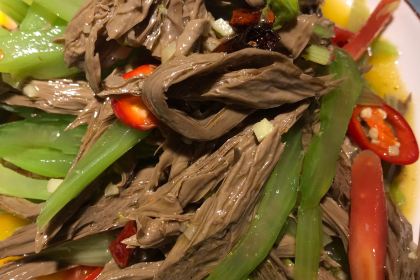LIU FU JIU GUAN
4.0/5
10 Reviews
No. 3 of Local Restaurants in Xianyang







More
Currently closed|Open at 17:00 todayShow more
+8613299817528
No. B-1-13, Qinlong Pedestrian Street
 Banana能量The Sichuan cuisine tastes great and the portions are generous, especially the cold jelly.
Banana能量The Sichuan cuisine tastes great and the portions are generous, especially the cold jelly.Reviews of LIU FU JIU GUAN
Some reviews may have been translated by Google Translate
4/5Excellent
All (10)
Latest
Photo reviews (1)
Positive reviews (1)
The Sichuan cuisine tastes great and the portions are generous, especially the cold jelly.
Three Days Two Nights in Xianyang | Unlocking History and Local Flavors in the Ancient Capital of Qin and Han Dynasties Hello everyone! Finally, my long-awaited trip to Xianyang has begun! This city, steeped in half of Qin and Han history, boasts both the solemnity of imperial tombs and the vibrant energy of street food. Save this firsthand guide! Day 1: First Encounter with Xianyang, Touching the Threads of History Upon landing in the morning, I headed straight to the Qin and Han Hall of the Shaanxi History Museum. The elevated building truly evokes the feeling of a Qin and Han palace! The digital exhibition hall offers an immersive experience of the daily lives of Qin and Han people. The unearthed bronze swords and terracotta figurines are incredibly detailed; I highly recommend renting an audio guide to truly understand the meaning of "a glimpse into a thousand years." Lunch was a must for local specialties! I found a restaurant in the old street. The pulled noodles were chewy and flavorful, and the roujiamo (Chinese hamburger) was bursting with rich, oily goodness. A bowl of liangpi (cold skin noodles) helped cut the richness, and we ate until we were stuffed for about 20 yuan per person. In the afternoon, we visited the Xianyang Museum, which boasts an exceptionally complete collection of Qin and Han dynasty artifacts. After a tiring visit, we strolled through the nearby Xianyang Lake scenic area. The breeze along the Wei River instantly soothed all our fatigue. For dinner, we chose Liufu Tavern, a popular spot for locals to enjoy barbecue skewers; the atmosphere was incredibly lively. For accommodation, we stayed at the Hilton Garden Inn Xianyang Stadium. It was extremely convenient, within walking distance of the shopping district. The room was clean and included breakfast. Day Two: Imperial Tombs and Folk Customs We got up early and headed straight to Qianling Mausoleum. This unique joint burial mausoleum of a husband and wife emperor was truly awe-inspiring! The stele without inscription stands atop Liangshan Mountain; when the wind blows, it feels as if you can hear the echoes of history. Remember to wear comfortable shoes, as climbing the mausoleum requires some stamina. At noon, we drove to the Mawei Post Station Food Street in Xingping. The guokui (a type of flatbread) was crispy on the outside and soft on the inside, and there was a dazzling array of noodles and snacks to choose from, both spicy and non-spicy, catering to all tastes. In the afternoon, I strolled around the Mawei Post Station Folk Culture Experience Park. The ancient post station-style buildings housed numerous intangible cultural heritage handicrafts, and you could even watch shadow puppetry, immersing yourself in the customs of the Han and Tang dynasties. In the evening, I returned to the city and soaked in the Xianyang Haiquanwan Hot Springs – so relaxing and comfortable, perfect for a break during the trip. Day 3: Fireworks to wrap things up, bidding farewell to the ancient capital In the morning, I had an authentic breakfast on the street: oil tea with fried dough twists and steamed rice cakes – a sweet and savory treat that was incredibly comforting. Finally, I did some shopping in the old street, buying some Liaohua candy as souvenirs. ✨ Travel Tips: 1. The Qin and Han Museum and the Museum of Natural History are closed on Mondays, so don't make a wasted trip! 2. Qianling Mausoleum is quite far from the city center; taking a taxi or sharing a ride is recommended for more flexibility. 3. Local cuisine is mainly noodle-based; those with sensitive stomachs should bring some digestive aids. The beauty of Xianyang lies in its rich historical heritage and the vibrant life found in its streets and alleys. Three days wasn't enough! I'll definitely come back to unlock more hidden gems! Remember to like and follow for more travel tips next time!